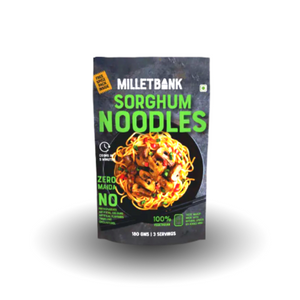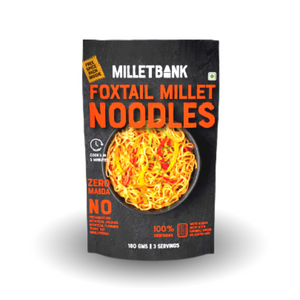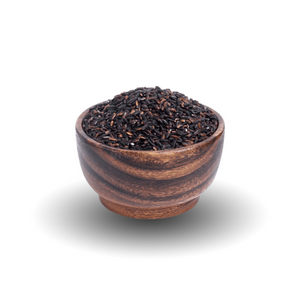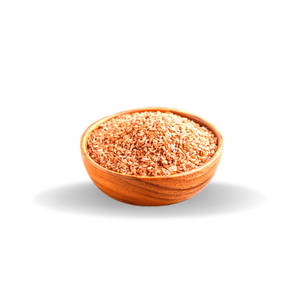"Fuel Your Body, Manage Your Diabetes: Embrace a Healthy Eating Lifestyle."

If you have diabetes, it’s important to follow a healthy and balanced diet that helps manage your blood sugar levels. Here are some general guidelines for a healthy diabetes diet:
Focus on whole, nutrient-dense foods: Choose foods that are high in fiber, vitamins, and minerals. Examples include fruits, vegetables, whole grains, lean protein sources such as fish, poultry, tofu, beans, and legumes.
Limit processed and sugary foods: Avoid foods that are high in added sugars, refined carbohydrates, and unhealthy fats. Examples include sugary drinks, desserts, white bread, and fried foods.
Control portion sizes: Eating too much of any type of food can cause blood sugar levels to rise. Use a food scale, measuring cups, or other portion-control tools to make sure you’re eating the right amount of food.
Watch your carbohydrate intake: Carbohydrates can have a big impact on blood sugar levels. Work with a registered dietitian or healthcare provider to determine the right amount of carbs for you.
Eat regularly: Eating regular meals and snacks can help keep blood sugar levels stable throughout the day.
Stay hydrated: Drink plenty of water and other low-calorie beverages throughout the day.
Remember, everyone’s dietary needs are different, so it’s important to work with a registered dietitian or healthcare provider to create a personalized diabetes meal plan that works for you.
Lets Talk About Breakfast & Snacks
Millet is a nutritious and diabetic-friendly grain that can be a great addition to a healthy breakfast.
Millet rava, also known as millet semolina, is a nutritious and diabetic-friendly alternative to wheat-based semolina (rava). Millet is a whole grain that is high in fiber, protein, and essential nutrients, and has a low glycemic index, which means it helps to regulate blood sugar levels. Here are some ways to use millet rava in a diabetic-friendly diet:
Upma: Upma is a popular South Indian breakfast dish that is traditionally made with wheat-based semolina. However, you can replace the wheat semolina with millet rava to make it more diabetic-friendly. Cook the millet rava in water or broth, and then add vegetables such as onions, carrots, and peas. Serve with a side of coconut chutney or sugar-free tomato ketchup.
Idli: Idli is a steamed rice and lentil cake that is a staple breakfast dish in South India. You can replace the rice with millet rava to make it more diabetic-friendly. Soak urad dal and millet rava separately, grind them into a batter, and then mix them together. Allow the batter to ferment overnight, and then steam the idlis in a steamer. Serve with a side of sambar and chutney.
Porridge: Millet rava porridge is a warm and comforting breakfast that is easy to make. Cook the millet rava in milk or almond milk until it becomes soft and creamy. Add your favorite toppings such as nuts, seeds, and berries.
Kheer: Kheer is a sweet dessert that is traditionally made with rice. However, you can replace the rice with millet rava to make it more diabetic-friendly. Cook the millet rava in milk or almond milk until it becomes soft and creamy, and then add your favorite sweetener such as honey or stevia. Add nuts and raisins for added texture and flavor.
Overall, millet rava is a nutritious and diabetic-friendly alternative to wheat-based semolina. When preparing millet rava dishes, be sure to choose whole millet grains rather than processed millet products that may contain added sugars or unhealthy fats.


Jowar Idly Rava
Jowar rava is a diabetic-friendly alternative to wheat rava, as it is high in fiber, protein, and essential nutrients, and has a low glycemic index.

Multi Millet Upma Rava
Multi Millet Upma made with rava is a healthy and diabetic-friendly breakfast option due to its low glycemic index and high fiber content.

Foxtail Millet Idly Rava
Foxtail Millet Idly rava is a nutritious and diabetic-friendly breakfast option due to its low glycemic index, high fiber, and protein content.

Bajra Rava
Bajra rava is a diabetic-friendly and healthy alternative to regular rava due to its low glycemic index and high fiber content.
Millet noodles can be a healthier option for people with diabetes compared to regular noodles as they have a lower glycemic index and higher fiber content, which can help regulate blood sugar levels. However, it's important to consider the overall nutritional content of the noodles and consume them in moderation as part of a balanced diet.

Multi Millet Noodles
Multi-millet noodles are a nutritious and diabetic-friendly alternative to regular noodles due to their low glycemic index and high fiber and protein content.

Finger Millet Noodles
Finger millet noodles are a healthy and diabetic-friendly option due to their low glycemic index, high fiber, and mineral content, which can help regulate blood sugar levels and improve overall health..

Sorghum Noodles
Sorghum noodles can be a beneficial addition to a diabetic diet due to their low glycemic index, high fiber, and protein content, which can help regulate blood sugar levels and promote satiety.

Foxtail Millet Noodles
Foxtail millet noodles are a healthy and diabetic-friendly option due to their low glycemic index, high fiber, and nutrient content, which can help regulate blood sugar levels and improve overall health.
Rotis, Chapati

Samba wheat Aata (Flour) has a GI of 55, which is considered low compared to other grains such as white rice or wheat flour. This means that it is absorbed more slowly by the body, which helps to keep blood sugar levels stable. Additionally, samba wheat aata is a good source of fiber, which also helps to regulate blood sugar levels.
Multi Millet Atta (Flour) can be a healthier option for people with diabetes compared to regular wheat flour due to its lower glycemic index and higher fiber and nutrient content, which can help regulate blood sugar levels and improve overall health.
Jowar Atta (Flour) is a diabetic-friendly option as it has a lower glycemic index compared to regular wheat flour and is rich in dietary fiber and protein, which can help regulate blood sugar levels and promote satiety.
Ragi Atta (Flour) is a diabetic-friendly option as it has a low glycemic index, high fiber content, and is rich in minerals like calcium and iron, which can help regulate blood sugar levels, improve digestion and promote bone health.
Barley Atta (Flour) can be a beneficial addition to a diabetic diet due to its low glycemic index, high fiber content, and unique blend of nutrients like beta-glucan, which can help regulate blood sugar levels, lower cholesterol, and improve heart health.
Bajra Atta (Flour) is a diabetic-friendly option as it has a low glycemic index and high fiber content, which can help regulate blood sugar levels, improve digestion, and promote satiety. Additionally, it is rich in essential nutrients like iron, magnesium, and phosphorus, which can help improve overall health.
Quinoa Atta (Flour) is a healthy and diabetic-friendly option due to its low glycemic index, high fiber content, and complete protein profile, which can help regulate blood sugar levels, promote satiety, and support overall health by providing essential amino acids and nutrients like iron, magnesium, and phosphorus.
We have more options in diabetic friendly flours.

Multi Grain Atta
Multi-grain aata, with a combination of whole grains, can be beneficial for managing blood sugar levels in people with diabetes due to its higher fiber content and lower glycemic index.

Multi Millet Ata
Multi Millet aata, being a whole grain with a lower glycemic index and higher fiber content, can be a good choice for managing blood sugar levels in people with diabetes.

Yellow Jowar Aata
Yellow jowar aata, being a whole grain with a low glycemic index, can be a suitable option for people with diabetes to manage their blood sugar levels.

Bajra Aata
Bajra aata, being a whole grain with a low glycemic index and high fiber content, can be a beneficial option for people with diabetes to help manage their blood sugar levels.
Rice For Diabetics
Brown Rice has a lower glycemic index compared to white rice, which means it can help regulate blood sugar levels and may be a better option for people with diabetes.
Black Rice has a lower glycemic index compared to white rice, which means it can help regulate blood sugar levels and may be a better option for people with diabetes. Additionally, black rice contains anthocyanins, which are antioxidants that may have anti-inflammatory and glucose-lowering effects.
Deccanmudra Low GI rice refers to types of rice that have a lower glycemic index, which means they cause a slower and more gradual increase in blood sugar levels compared to high GI rice. Low GI rice options include brown rice, basmati rice, black rice, wild rice, and some varieties of sticky rice. Eating low GI rice may help regulate blood sugar levels and can be beneficial for people with diabetes or those looking to manage their weight.
Doctor Rice is a brand of rice that claims to be low GI, gluten-free, and organic. According to their website, Doctor Rice is made from a special strain of rice that has a low glycemic index, making it suitable for people with diabetes or those looking for a healthier alternative to traditional rice. However, it’s important to note that I have not personally tried this brand of rice and cannot provide any specific recommendations or endorsements. It’s always best to consult with a healthcare professional or a registered dietitian before making any significant changes to your diet.


Black Rice
Black rice may have potential benefits for diabetes management due to its low glycemic index and high antioxidant content.

Brown Rice
Brown rice may be a better option than white rice for people with diabetes due to its higher fiber content and lower glycemic index.

Deccan Mudra Low GI Rice
Deccanmudra Single polished low glycemic index (GI) rice may be a suitable option for people with diabetes as it has a lower GI and may help in blood sugar control.

Doctor Low GI Rice
Manufacturer claims that Doctor rice has a GI of below 55, which falls in the low to medium GI category, according to the University of Sydney GI Database. Other types of rice have GI reaching 72 to 98.
Quinoa Rice & Atta
“Quinoa: the versatile, nutrient-packed superfood for a healthy lifestyle.”
- Effects on diabetes:
- Low glycemic index: Quinoa has a low glycemic index, which means it doesn’t cause a rapid spike in blood sugar levels.
- High in fiber: Quinoa is a good source of fiber, which can help regulate blood sugar levels by slowing down the absorption of carbohydrates.
- High in protein: Quinoa is also high in protein, which can help stabilize blood sugar levels and promote feelings of fullness.
- Recipe ideas:
- Quinoa and black bean salad: Cook quinoa according to package instructions and mix with black beans, diced tomatoes, diced avocado, and cilantro. Dress with olive oil, lime juice, and salt and pepper.
- Quinoa stir-fry: Cook quinoa according to package instructions and stir-fry with mixed vegetables (such as bell peppers, broccoli, and carrots) and lean protein (such as chicken or tofu). Season with soy sauce, garlic, and ginger.
- Quinoa breakfast bowl: Cook quinoa with milk and cinnamon. Top with sliced bananas, chopped nuts, and a drizzle of honey.
- Quinoa and vegetable soup: Cook quinoa according to package instructions and add to a pot of vegetable soup (such as tomato or minestrone). Serve with a whole-grain roll.
- Quinoa and chicken casserole: Cook quinoa according to package instructions and mix with cooked chicken breast, chopped vegetables (such as zucchini and bell peppers), and a tomato-based sauce. Top with shredded cheese and bake in the oven until bubbly.
Overall, quinoa can be a healthy and delicious addition to a diabetes-friendly diet. However, it’s important to remember to monitor portion sizes and to balance it with other nutrient-dense foods. As always, consult with a registered dietitian or healthcare provider for individualized dietary recommendations.

